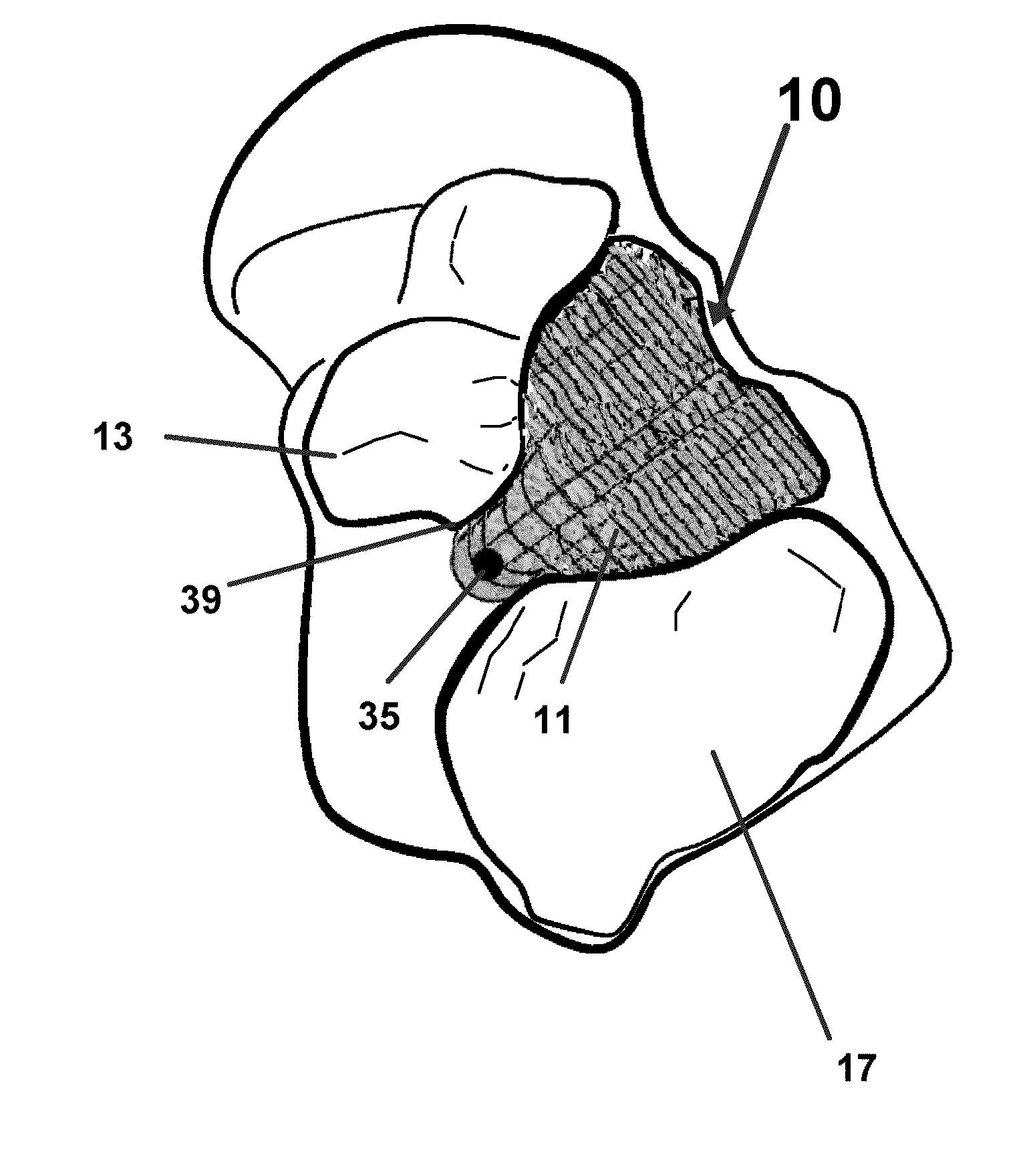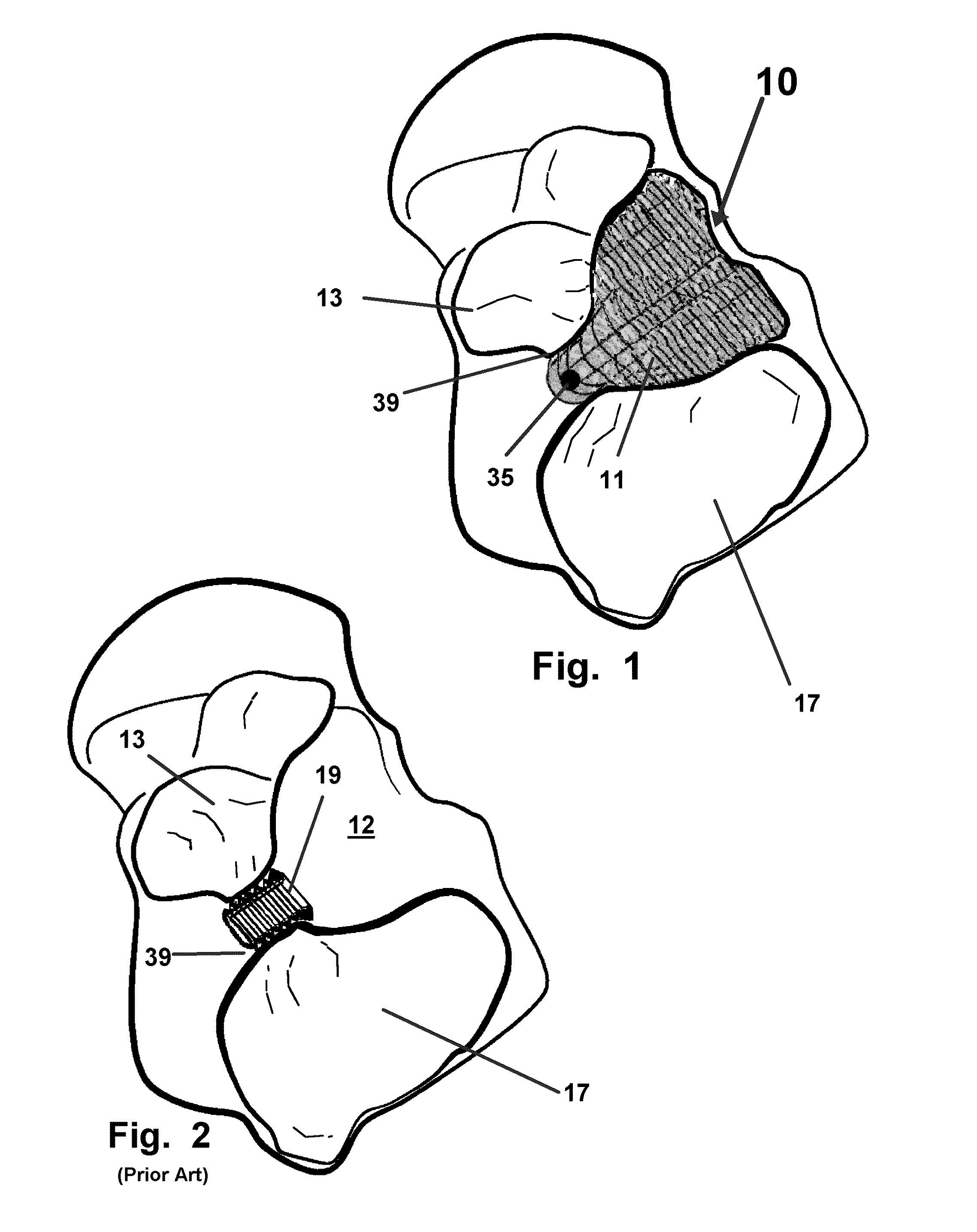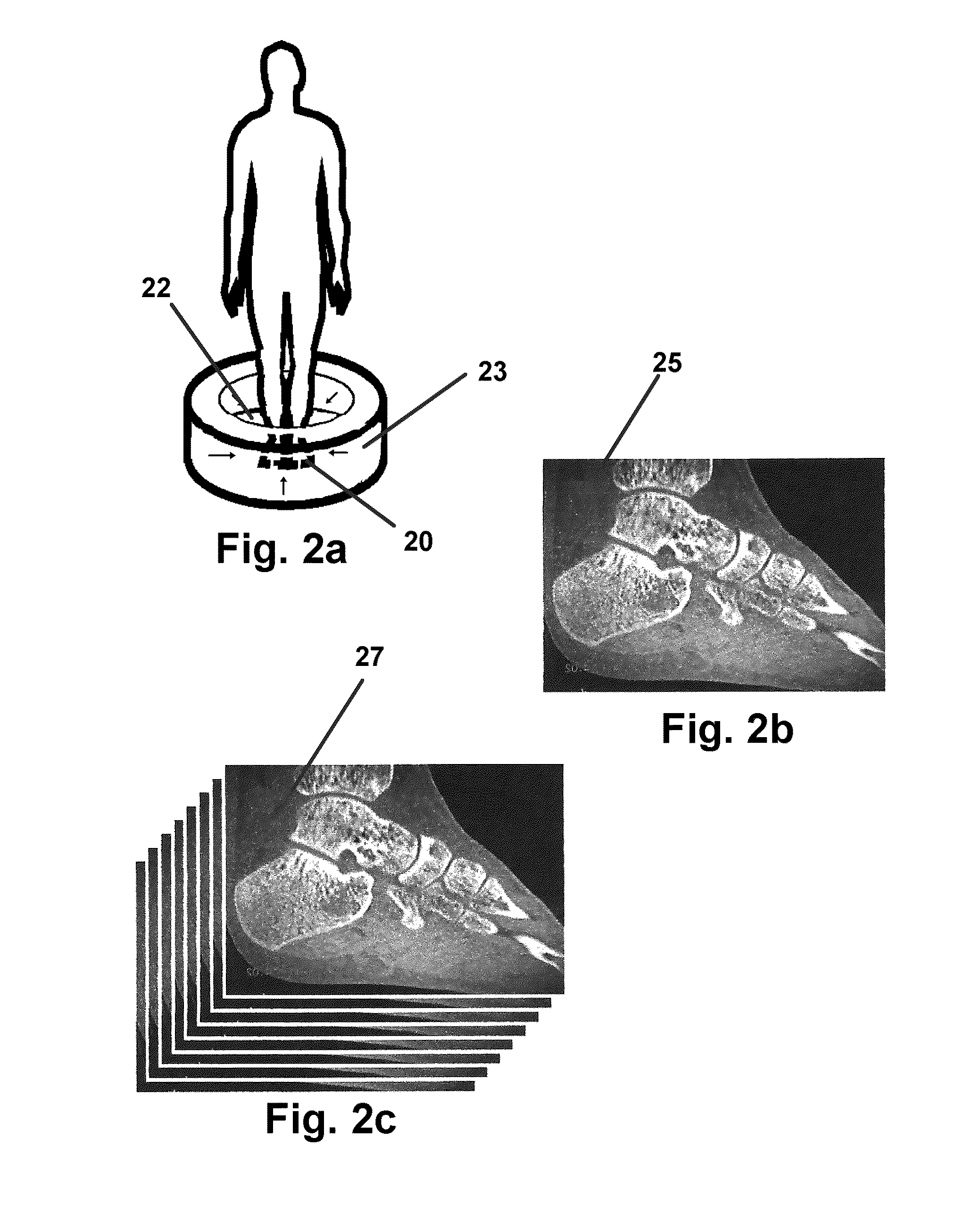Subtalar arthroereisis implant apparatus and treatment method
a technology of subtalar arthroereisis and implant apparatus, which is applied in the field of treatment of excessive pronation of feet, can solve the problems of immense force, large error space, and high cost of devices and modifications, and achieve the effects of maximum, success, comfort and performan
- Summary
- Abstract
- Description
- Claims
- Application Information
AI Technical Summary
Benefits of technology
Problems solved by technology
Method used
Image
Examples
Embodiment Construction
[0054]Referring now to the drawings 1-4, where similar components and structures are denoted with like numerals, there is seen in FIG. 1 an illustration of the device 10 herein formed by the disclosed method for the device 10. As depicted in the horizontal sliced view through the anatomic space of the sinus tarsi 12, the device 10 is engaged therein and has been formed with the proper topography and resulting sides and surfacing to maximize contact of the device 10 surfaces 11 with the adjacent bone structures of the middle calcaneal facet 13 and the shown posterior facet 17. The surfaces 11 so formed, yield a device whose dimensions and exterior surfaces 11 which substantially mirror the topography of the surrounding anatomic space of the sinus tarsi 12.
[0055]So implanted, the device 10 provides a means to substantially maintain the relative positions of the bones engaged with the sides 11 of the device, to maintain the patient's foot in a substantially proper posture or position f...
PUM
 Login to View More
Login to View More Abstract
Description
Claims
Application Information
 Login to View More
Login to View More - R&D
- Intellectual Property
- Life Sciences
- Materials
- Tech Scout
- Unparalleled Data Quality
- Higher Quality Content
- 60% Fewer Hallucinations
Browse by: Latest US Patents, China's latest patents, Technical Efficacy Thesaurus, Application Domain, Technology Topic, Popular Technical Reports.
© 2025 PatSnap. All rights reserved.Legal|Privacy policy|Modern Slavery Act Transparency Statement|Sitemap|About US| Contact US: help@patsnap.com



